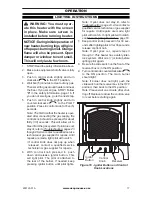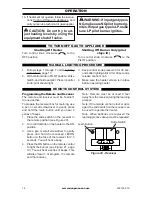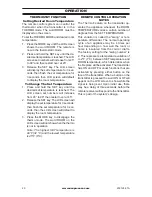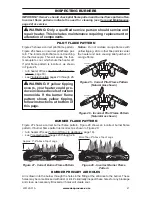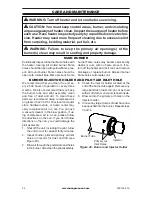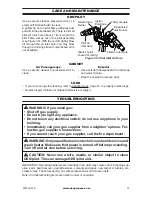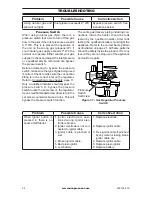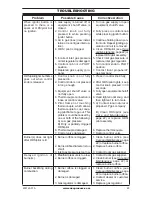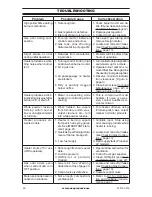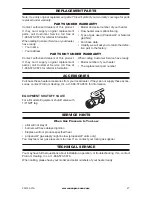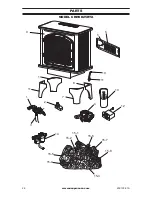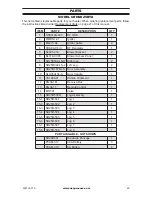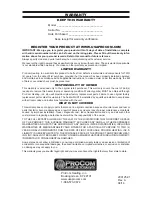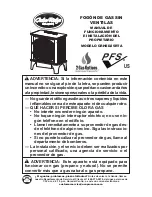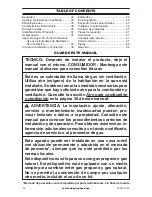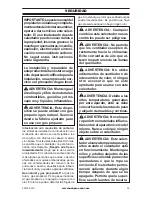
www.usaprocom.com
23
200125-01A
Use a vacuum cleaner, pressurized air, or a
small, soft bristled brush to clean.
A yellow tip on the pilot flame indicates dust
and dirt in the pilot assembly. There is a small
pilot air inlet hole about 2" from where the
pilot flame comes out of the pilot assembly
(see Figure 30). With the unit off, lightly blow
air through the air inlet hole. You may blow
through a drinking straw if compressed air is
not available.
Figure 30 - Pilot Inlet Air Hole
CARE AND MAINTENANCE
CABINET
ODS/PILOT
Air Passageways
Use a vacuum cleaner or pressurized air to
clean.
Exterior
• Use a soft cloth dampened with a mild soap
and water mixture.
• Wipe the cabinet to remove dust.
LOGS
• If you remove logs for cleaning, refer to
Installing Logs
, page 14, to properly replace logs.
• Replace log(s) if broken or chipped (dime-size or larger).
(Back of pilot
shown for clarity)
Pilot Air
Inlet Hole
Natural Gas
Burner
Propane/LP
Gas Burner
Thermocouple
Pilot Air Inlet Hole
Ignitor
Electrode
TROUBLESHOOTING
WARNING: If you smell gas:
• Shut off gas supply.
• Do not try to light any appliance.
• Do not touch any electrical switch; do not use any phone in your
building.
• Immediately call your gas supplier from a neighbor’s phone. Fol
-
low the gas supplier’s instructions.
• If you cannot reach your gas supplier, call the fire department.
WARNING: Only a qualified service technician should service and
repair heater. Make sure that power is turned off before proceeding.
Turn off and let cool before servicing.
CAUTION: Never use a wire, needle, or similar object to clean
ODS/pilot. This can damage ODS/ pilot unit.
IMPORTANT:
Operating heater where impurities in air exist may create odors. Cleaning sup-
plies, paint, paint remover, cigarette smoke, cements and glues, new carpet or textiles, etc.,
create fumes. These fumes may mix with combustion air and create odors.
Note: All troubleshooting items are listed in order of operation.









